This is the final of 5 blog articles on the Long Trail in addition posts on Instagram and Strava. See links below.
Long Trail Announcement – Part I
Long Trail FKT Recap – Part II
Long Trail Gear List & Review – Part III
Long Trail Food & Sleep Strategy – Part IV (this is it!)
Documentary Q&A with the Director – Part V
Watch the documentary here
Sleep, food and energy levels on the Long Trail
How does your mind and body cope with a 5 day ultra endurance event?
Truth be told, no one knows. All you can do is prepare for the best, expect the worst and never surrender.
Between the Appalachian Trail and the Pacific Crest Trail, I’ve had plenty of experience with multi-night endurance events. Compared to these two distances, 2,189 and 2,660 miles respectively, the 272-mile Long Trail seems like a walk in the park.
I’ve also raced much speedier endurance events. With multiple finishes at CCC at UTMB, an FKT on the Wicklow Round and a 12:53 100 mile track PR, I feel comfortable crushing miles in a single push effort.
The Long Trail was neither of these. Let’s dive in.

Mid vs. Long Length Trail Strategy
I averaged 50 miles a day on both the Pacific Crest Trail and Appalachian Trail. By that math, I should be able to average 60 miles a day and challenge the supported record on shorter trail, right?
Conventional wisdom be damned I scrapped by on the Long Trail, only average 55 miles a day. Although 50 vs. 55 miles are similar on paper, I took a very different approach to long-length FKTs (PCT, AT) compared to a mid-length FKT (LT).
On the Appalachian Trail, I needed to be healthy enough to carry on for another month. Eating enough was crucial; my body asked for 8,000-12,000 calories per day. I would sleep 5-6 hours with 14-17 hours of moving time. If I hit too many 17 hour days, my body started to break down. Every 2-5 days, I needed a resupply. That would add 2-3 hours to my day. All in all, I was averaging 3-3.5 mile per hour while moving.
On the Long Trail, I need to get to the finish line. Eating and sleeping are important, but my metabolism hadn’t caught up to the severe caloric deficit I amounted from my high energy output. I’d eat around 7,000 calories per day. I would sleep 3-4 hours per night with 18-19 hours of moving time. Carrying all the weight on my pack from the start, I didn’t need a resupply. I averaged between 2.5-3 miles per hour while moving.

My Pacing Strategy
As an ultramarathon coach, I encourage my runners to have an A, B and C goal for each race. My A pace was to go sub 4.5 days at a faster pace, my B pace was to go sub 4.5 days at a slower pace, and my C pace was to finish in 5.5 days.
Outlined below is my goal strategy.
| Run Strategy | A Distance | A TOF | A Sleep | A Calories | B Distance | B TOF | B Sleep | B Calories | C Distance | C TOF | C Sleep | C Calories |
| Day 1 | 60 | 19 | 4 | 9000 | 50 | 17 | 6 | 8000 | 45 | 17 | 6 | 7500 |
| Day 2 | 60 | 19 | 4 | 9000 | 50 | 17 | 6 | 8000 | 45 | 17 | 6 | 7500 |
| Day 3 | 60 | 19 | 4 | 9000 | 50 | 17 | 6 | 8000 | 45 | 17 | 6 | 7500 |
| Day 4 | 75 | 23 | 0 | 10500 | 75 | 23 | 0 | 10500 | 50 | 19 | 4 | 8000 |
| Day 5 | 18 | 7 | 0 | 4800 | 48 | 17 | 0 | 7800 | 60 | 23 | 0 | 9000 |
| Day 6 | 0 | 0 | 0 | 0 | 0 | 0 | 0 | 0 | 28 | 10 | 0 | 5800 |
| Totals | 273 | 87 | 12 | 42300 | 273 | 91 | 18 | 42300 | 273 | 103 | 22 | 45300 |
| Conversions | 103 | 4.3 | 3.1 | 2.7 | 113 | 4.7 | 3.0 | 2.4 | 129 | 5.4 | 2.7 | 2.1 |
Key
Distance = miles
TOF = time on feet; moving time
Sleep = hours
Conversions x Distance = Total hours needed of moving time to finish
Conversions x TOF = Days to finish
Conversions x Sleep = Moving pace, miles per hour
Conversions x Calories = Average pace, miles per hour
How much should I sleep?
You will notice in the above graph that I allocated 4-6 hours per day of sleeping. On nights one, two and three, I slept 4 hours each. On nights four and five, I slept 2-3 hours each.
During shorter overnight endurance events, the common philosophy is to take micro naps. You can trick your body by going through one full REM cycle, about 30-45 minutes. Because of this, many people would recommend that you take as many short ‘dirt naps’ as you need on an ad hoc basis.
On longer overnight endurance events, the common philosophy is that extensive recovery is essential. Being adequately rested is of upmost importance to prevent your body from breaking down over time. Therefore, you should sleep 5-8 hours a night.
Two days before I hit trail. I can’t figure out how much I should sleep. How can I plan what to expect when I push my body to its physical limits?
Luckily, the trail queen of trail queens is my good friend, Heather Anderson.
She steers me away from my original plan of 4-6 hours of continuous sleep per night. Doing the Colorado Trail, she would take dirt naps, and ensured that a similar strategy would work for me. We agree that due to certain conditions, like unpacking/packing my kit and maximizing daylight, it would be best to take two 2-hour naps. One just after dusk and one just before dawn.
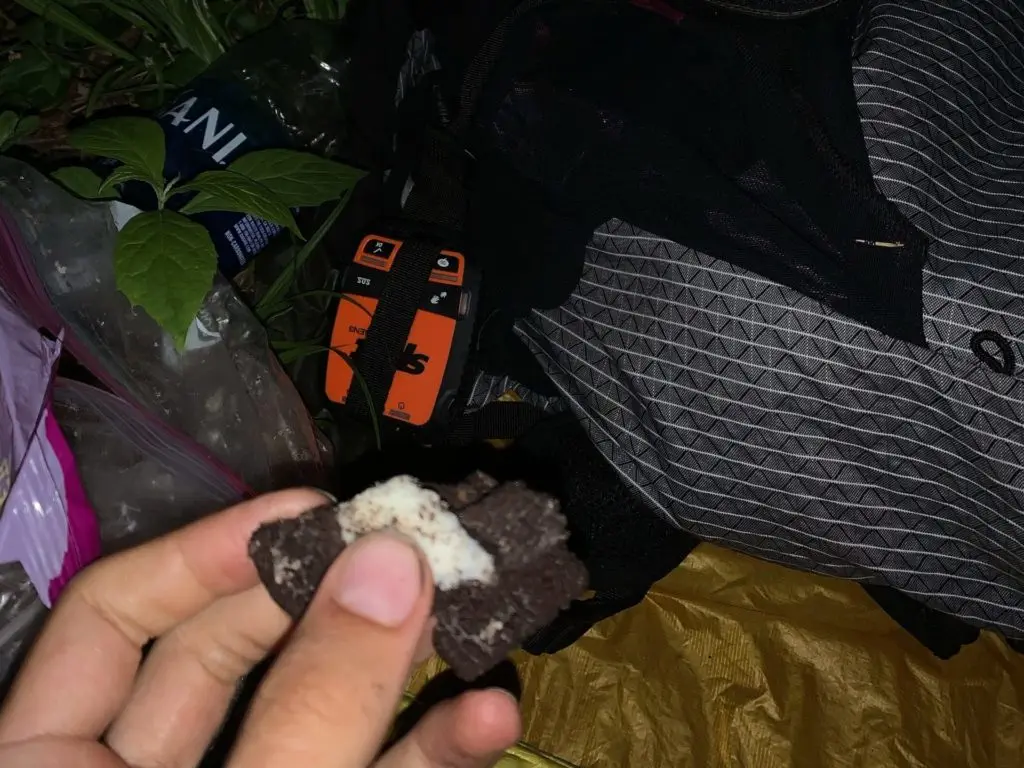
How much should I eat?
The US Department of Health recommends that the average American male eats between 2,000-3,000 calories per day. Michael Phelps was reported to eat up to 12,000 calories per day while training to win the Olympic gold. The only difference between me and Michael Phelps, aside from 12 Olympic gold medals, is that he has access to a full chef and kitchen.
Okay, so Michael Phelps is objectively cooler than me, but it doesn’t change the fact that I need a LOT of food. And none of it is cooked. Being self-supported, I carry all my food on my back – with no stove.
Luckily, I’ve endured eating large quantities of food with little production value. During the end of the Appalachian Trail, I was eating around 12,000 calories per day. Even with this enormous amount of food, I still lost weight. While I need to replenish calories, I know my metabolism won’t kick in for a few days, and I should only be trying to eat enough calories to get me to the finish.
For a ballpark number, I need to eat between 20,600 and 64,800 calories. If I’m being risky and bring a minimal amount of food, I would combine (“A” goal total hours: 103) x (200 calories per hour) = 20,00 calories. The 200 calories per hour is an ultrarunner rule of thumb for how many calories your body can process an hour. If I’m being extra cautious and try to replace the majority of lost calories I would combine (“C” goal total days: 5.4) x (12,000 calories per day) = 64,800 calories.
I took the middle road and incorporated both schools of thought, the Michael Phelps/Ultra endurance calories per day and the ultrarunner calories per hour. In this case, I determined that if moving at a slower pace, I should eat ~300 calories per hour. Additionally, I should eat 3,000 additional calories per day since my body will have more time to process energy when sleeping. This puts me at 8,000-9,000 calories per day.
I brought just over 40,000 calories or 18.2 pounds.
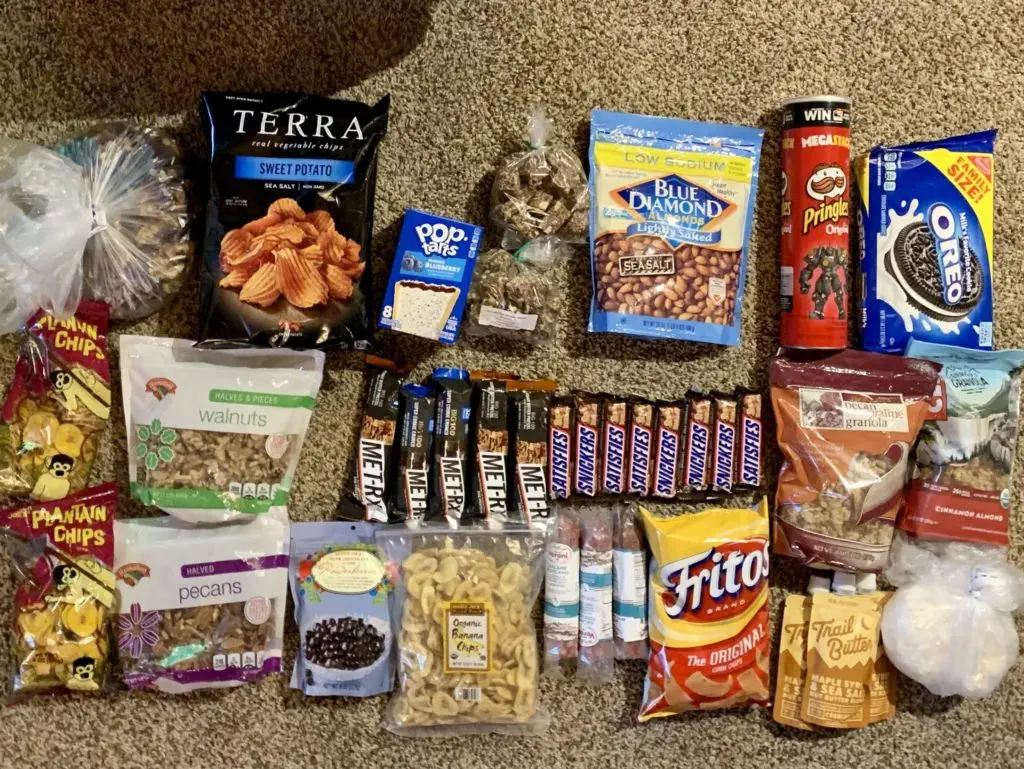
What should I eat?
I need food that is calorically dense and easy to eat. None of it can be cooked. Yum.
Here is a brief list of the foods I brought: Trail Mix, Dried Coconut, Terracotta Sweet Potato Chips, Chia Seed Energy Bars, Granola, TJ’s Banana Chips, Plantain Chips, TJ’s Powerberries, Trail Butter Maple Syrup, MET-RX Bar, Fritos, Pop-tart, Dates, Blue Diamond Almonds, Pringles, Walnuts, Pecans, Oreos, Snickers, Salami Toscano.
What was I looking for? I wanted balanced macronutrients and high calorically dense foods.
Based on prior experiences and a little research, I wanted primarily carbs, some fat, and a little protein. My body also needed some additional sodium. Additionally, I wanted foods to have 140 cal/oz, although I would make a few exceptions for carb, protein and sodium dense foods.
A big dilemma with food planning is that fat-heavy foods are more efficient. Fats carry 9 calories per gram, while carbs and protein offer a measly 4. On the other hand, carbohydrates are the most efficient driver to produce ATP, aka energy.
So, I weighed my foods, calculated ratios for calories (cal/oz), fat (g/oz), carb (g/oz), protein (g/oz) and sodium (mg/oz) and added them up. Then I tinkered on food quantities until I had my magic formula. In the end, I had 35.50% of calories from fats, 53.58% from carbs, 10.91% from protein, and 80 mg/oz of sodium. I would have liked to have a higher carb percentage, but oh well.
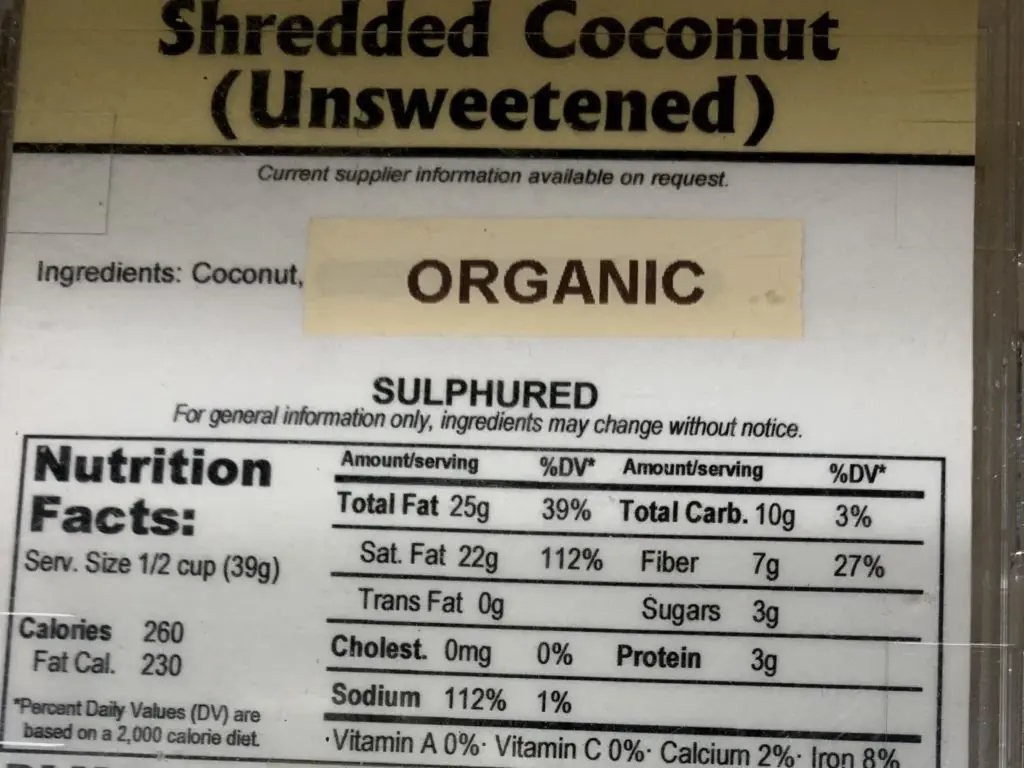
My Results
I completed the Long Trail in just under 5 days. Here is a brief mileage rundown, read more details in my Long Trail Recap post.
- 54 miles (41 miles + 13 miles) // Moving time = 17:30 // Sleep = 4 hours
- 45 miles (39 miles + 6 miles) // Moving time = 17:45 // Sleep = 4 hours
- 50 miles (42 miles + 8 miles) // Moving time = 18:30 // Sleep = 4 hours
- 57 miles (46 miles + 11 miles) // Moving time = 18:50 // Sleep = 3 hours
- 68 miles (52 miles + 7 miles + 9 miles) // Moving time = ~21:00 // Sleep = 2 hours
Mathematically, I would have eaten 8,000 calories per day, but I didn’t eat all my food. After doing some calculations, I must have eaten between 6,500-7,000 calories per day. I ate the most food on day 1-2, before a nasty throat infection caused issues.
Two key data points are important when considering this data. First, for the northern 170 miles, by far the most technical section of the 173 mile trail, my moving pace was closer to my C pace. Even though I was exhausted and beat up, my moving pace still improved towards the end, closer to my B pace.
Reflections on Sleep
Thank god for Heather Anderson. Sleeping twice for two hours was the ideal way to combat exhaustion, maximize healing time and maximize daylight hours.
Regarding exhaustion, I needed every hour of sleep I could get, aside from the last night. Had I avoided running out of batteries, I would have pushed on through the final night. Prior to that, sleeping in two 2-hour intervals for the first 3-4 days left me rejuvenated and energized. The only issue I had was on day 5 when I experienced a half-day bonk partially due to lack of food and, I suspect, compounded by lack of sleep. While I did wake up fresh each day, I didn’t experience any kind of hallucinations.
An underrated aspect of sleep during FKTs is body healing. When you sleep, your body goes into hyperdrive to repair damage. For example, when I went to bed on night two, my feet looked ghastly. I had trounced through a thunderstorm for an entire day. I knew I was starting to develop hotspot for blisters. After applying some Aquaphor and sleeping a day, my blister ended up not being so bad, and my feet looked much better. I had no issues lacing back up into my Columbia Trans Alp FKTs and tackling more miles. I experienced similar issues with chaffing on my back and crotch.
Another underrated aspect of FKTs is daylight hours. Compare my nighttime splits with my daytime splits. It is literally night and day. My pace is significantly faster when aided by natural light. So, I slept for 2 hours shortly after the sun went down and two hours later in the night before it came up. In doing so, I didn’t have to sacrifice any daylight hours to sleep. Additionally, this approach left me focused during the few hours I was hiking at night.
I would recommend this method for most FKTs, although I would pivot if I had a different pack set up. The reason I didn’t take 45 minute naps is because packing and unpacking my bag is laborious. My sleeping pad works as my internal frame, so, if I want to camp, I need to completely unpack/repack my bag. This takes a lot of time. If you have a blow up pad, like the gold standard Neo X-lite pad, you can have it easily accesible making it easy to take shorter naps.

Reflections on Food
My food plan was ruined by a nasty throat infection. On day 2, I noticed a slight soreness in the back of my throat. On day 3, I was no longer able to eat nuts because it hurt too much. On day 4, I had a hard time eating food unless it was soaked in water. Is this hell on earth?
I mostly blame the caloric density of food and a habit of not brushing my teeth at night for this. The food was understandably dense. Since I was eating on the go, I would often not thoroughly chew foods. I was huffing too hard from hiking to take the time, which irritated my throat.
Additionally, I tried to cram as many calories into my body as my stomach would take before bed. This meant I was laying sideways in my Mountain Laurel Designs Superlight Bivy in total darkness. The wind was howling and cold, however my focuses were on masticating. I would lay sideways, chewing on a dry mouthful of granola. After a hard day of running, sleep can hygiene. I wouldn’t want to take the extra effort to brush my teeth before passing out. When I woke up, I’d still have some bits of granola in my mouth which was certainly unhygienic, but I had bigger concerns on my mind,
So, my food game plan was totally thrown off. I ended up throwing away a good amount of food on trail, although I don’t know how much. I estimate eating between 6,500-7,000.
Even 6,500 calories is more calories than most other trail runners would take on an adventure like this. Often I hear that other athletes take 5,000 or maybe 6,000 calories. I believe that I could have had increased performance if I ate more food, especially on day 5, where I had a significant bonk.
On day 5, I combined ~1,500 calories of oreos, ~1,000 calories of almonds, mixed them in water, and devoured the mixture in about 2 hours. This was mostly what I ate on that day. While I felt bloated and miserable for the rest of the day, I believe these calories were critical to allow me to have a near sprint finish for the final 16 miles.
As the final piece to my article, below are my food winners and losers!
Winners:
- Cold soaking: You sneaky dog, who knew you’d be my favorite! I’d never put water in food before, and it was a great idea. It made eating much quicker and more efficient, although a bit messier. Will do again.
- Trail Butter: So fast easy and smooth, despite being individually packaged.
- Oreos and fritos: Damn, you’re so good.
- Snickers: You are my favorite treat and I will never, ever leave you and love you forever, I promise.
Losers:
- Nuts: My complicated ex-lover, why did you do this to me?! Nuts have been a trusty food source, but the oils combined with my throat infection made them unbearable.
- Chia Seed energy bars: I tried to be healthy.. They were dense and tough to eat, even on day 1.
- Trail Mix: Similar to nuts, I’ve always loved you, where did we go wrong? I would have used M&Ms and salted nuts to make more palatable.
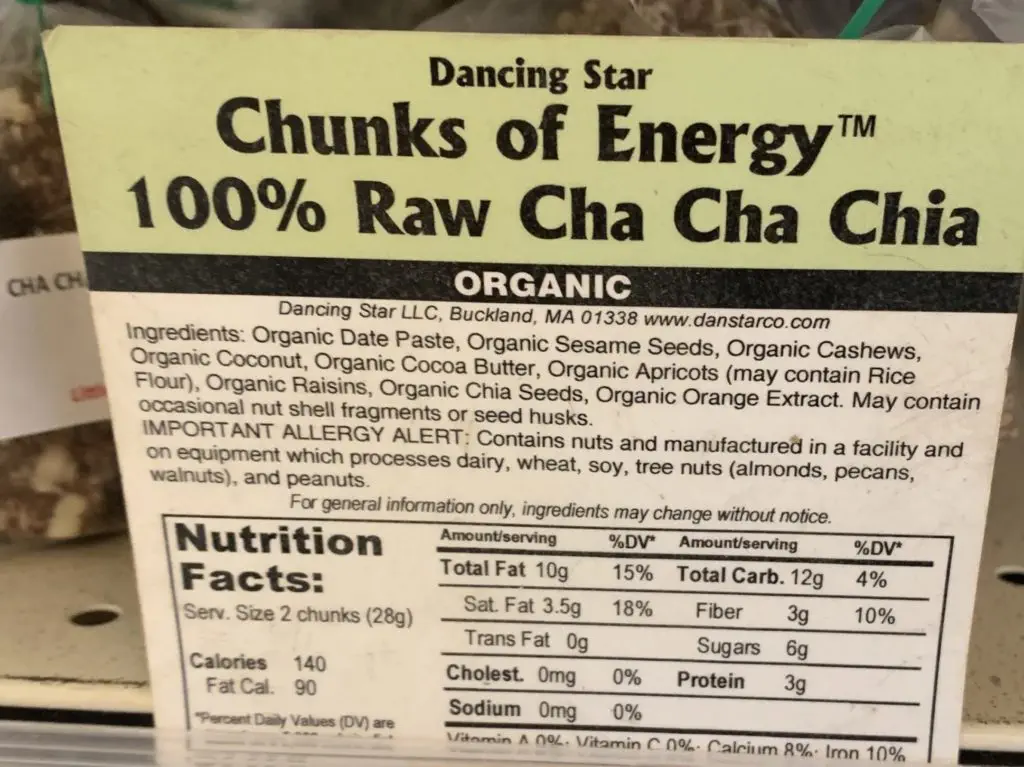
Is this still not enough?
Congratulations on reading my Long Trail FKT Food and Sleep Strategy post. I hope you enjoyed reading about my journey. This is the final post, if you have read all four of them, sorry for taking up 3-4 hours of your life! I hope you enjoyed this as much as I did writing about it.
Joe ‘Stringbean’ McConaughy is an ultramarathon runner for Columbia and a fastpacking/running coach. You can follow along with his adventures on Instragram, Facebook and Strava.
- Subscribe for my bi-weekly newsletter with coaching tips, adventures and no BS.
- Watch the documentary here
- Listen to a podcast on Joe stork on the Fastest Known Times Podcast
- Read an article on Joe by The Trek
- Read an article on Joe by Runner’s World
Leave comments/thoughts/musings below. I’ll happily answer any questions!
[disclosure]
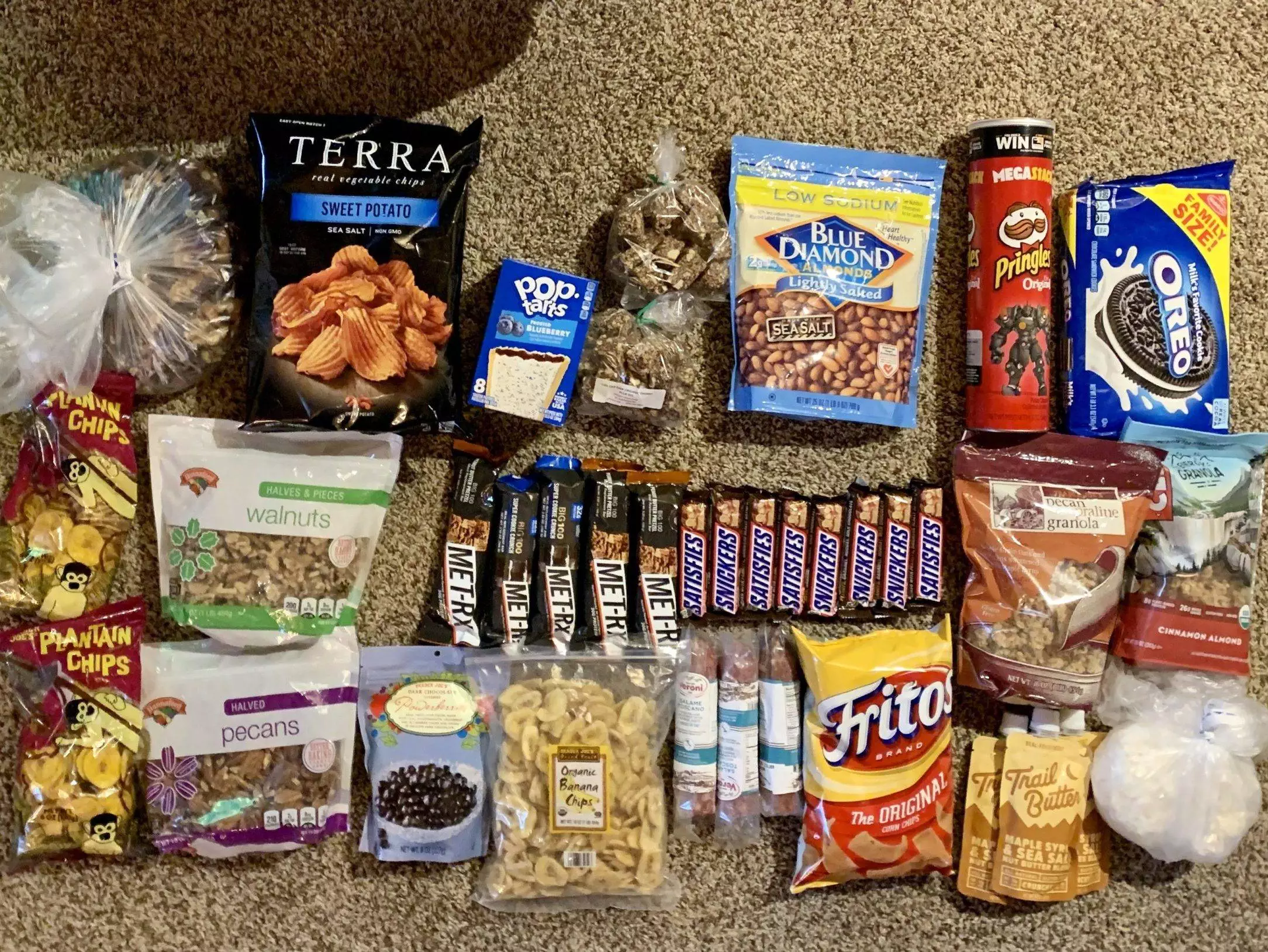
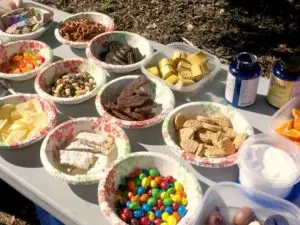
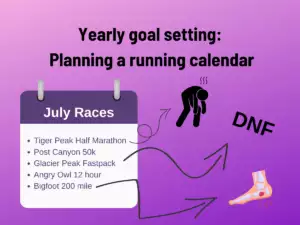
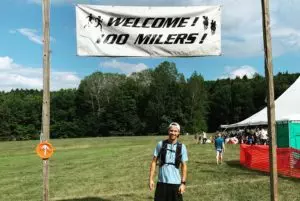
Hi Joe! I’ve been working on an unsupported FKT of the Northville Placid Trail in New York (two failed attempts – I’ll get it one day!) and follow you and Skurka for your amazing tips and experience. I don’t know if you’ve followed Herman Pontzer’s research (he wrote the book Burn) but basically he theorizes that the human body can only use your basal metabolic rate * 2.5 per day….so to figure the kcals you’d use on trail it would be BMR*2.5*days on trail. You’re consuming way more than that out there. You mentioned in an interview that you were participating in a doubly labeled water test on the Arizona Trail. I am fascinated to know how all this reconciles and if there were any revealing results. Obviously, being able to pinpoint precisely caloric need is hugely compelling. Anyway, sorry, I like the geeking out part of the project as much as the running part of it!! You’re totally my hero!!!
Niceeee, get after it, Sara! Funnily enough, Herman was one of the 3 scientists who I worked with on the AZT for that experiment.
A quick clarification on 2.5 * BMR. He believes that 2.5 * BMR is the limit of human endurance. Essentially, he is arguing that a human can sustain that energy output over an infinite period of time. On the AZT, I was about 6 * BMR, which fell in line with the exponential regression line he has developed following other athletes. 9,000 cal is significantly less than how much my body is burning over a 5 day effort, however you burn a lot of fats in an effort like that, so a caloric deficit is expected. Definitely would have packed significantly less calories if I were to do it again. Two athletes who I coached recently went 4,500 and 5,500 cal/day. The first athlete significantly underpacked based on her caloric needs and caused her to flow her effort.